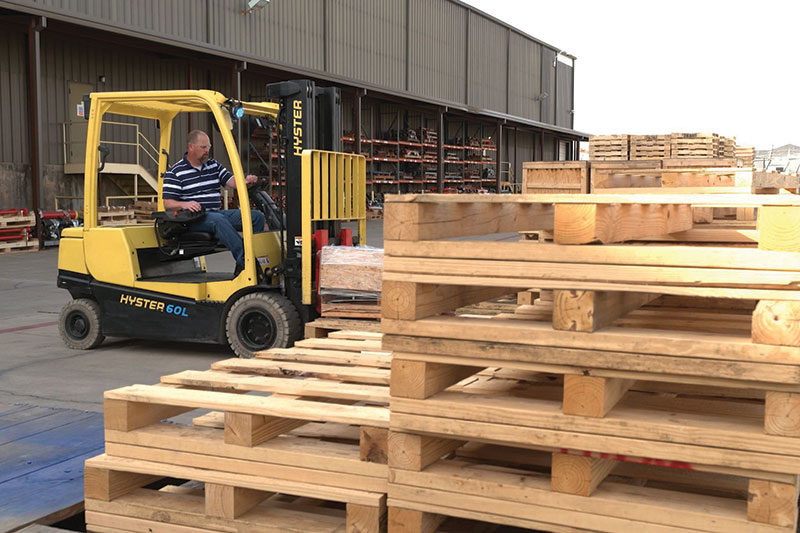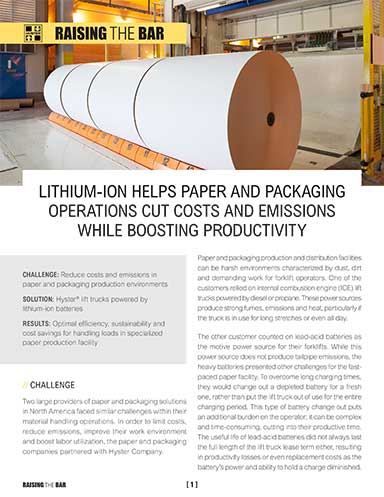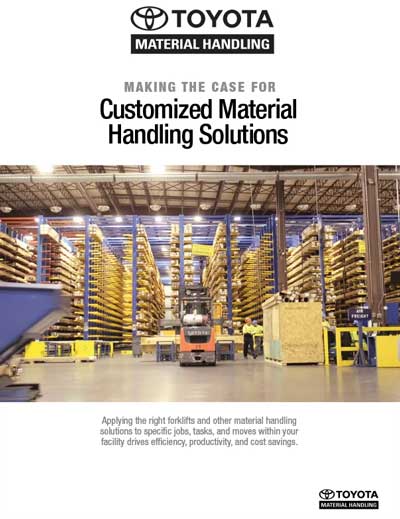Leasing’s fleet management upside
Besides ensuring access to newer trucks, leasing processes and contracts help operations adjust their fleet assets to changes in application needs.
Leasing is already a popular choice for acquiring lift trucks, with multiple advantages on the financial side for companies with lift truck fleets. Other key advantages to leasing are often operational in nature, starting with making it easier to adopt newer trucks and technology that might carry performance benefits, according to Bill Buckhout, director of leasing and remarketing for Hyster Company.
For many, says Buckhout, leasing can be attractive for financial reasons, like freeing up access to capital for larger projects, but also because it can help drive lower operational costs, in part by ensuring new trucks can be brought in when leases expire. By contrast, the purchase of lift trucks can lead to the desire to hold onto trucks longer in hopes of squeezing out more return on investment (ROI).
“One of the biggest issues for customers who purchase equipment is that they can’t get rid of a truck, so they keep it, and keep it, and keep it, and eventually, the efficiency of their overall fleet decreases dramatically,” Buckhout says. “What they end up with, almost universally, is too much equipment with high maintenance expenses, increased downtime, and possibly, too many assets. We find that the purchase path often leads to inefficient fleets.”
Lift truck leasing programs that offer flexibility, on the other hand, can help an operation receive more from their fleet. The foundational process of establishing the lease will closely examine application needs and hours. By selecting a renegotiable lease, you can ensure the operation isn’t stuck with trucks it’s under-utilizing for the fee it’s paying, or worse yet, over-utilizing, resulting in hefty fees for overshooting a limit.
Take a step back from these concerns, says Buckhout, and seek a flexible leasing solution that could provide a path to better fleet management.
“You can really look at leasing as a fleet management tool. We would argue that leasing is one of the most effective, though passive, forms of fleet management available.” says Buckhout.
A flexible lease arrangement, says Buckhout, can accomplish several key aims. These would include minimizing the costs associated with maintaining older purchased equipment; the hassle of figuring out how to sell or dispose of older trucks under the purchase model; and the chance to move into newer equipment that might add operational benefits for the fleet or ergonomic benefits for operators, which helps with recruitment and retention.
“One of the most important advantages of leasing is that it provides customers a way to keep up with the technology advances being added to our materials handling equipment, whether safety related, focused on operator ergonomics or performance related. That’s versus customers who opt for outright purchase and tend to keep trucks for 10 years or longer and therefore may miss out on the chance to move into newer trucks with these advantages.” - Buckhout
Leasing can be the answer, adds Buckhout, but it should be flexible, and ideally, from an organization that understands lift truck fleet workflows and truck types. The Hyster leasing program, he says, allows for renegotiation of leases mid-term or annually to adjust for actual use trends.
From the get-go, he adds, any good leasing program should study what each truck will be used for and its expected meter hours. But operational profiles change, not only in terms of site volumes, but also in terms of SKUs or the weights of pallets and goods being handled. This makes a mid-term lease renegotiation an attractive option, since it offers a way to adjust the lease.
“Most customer applications aren’t rigid,” says Buckhout. “They change over time. With our leasing products, if there is a better solution for the customer, like more hours are needed, or maybe they were lifting 5,000-pound loads before and now the loads are heavier, the lease can be renegotiated. There just aren’t a lot of applications that remain rigid over the five-to-seven-year lease term, so you want to be able to renegotiate a lease.”
There are many leasing providers in the market today, notes Buckhout, so while leasing is attractive in general for “CFO reasons” like keeping access to capital open, beware of leasing offers that seem like the best deal based on lowest monthly fee. Upon reading the fine print, they may be laden with fees for things like overshooting hours or for repair and transport costs in returning trucks coming off lease.
“Basing your leasing decision on cheapest payment is a bit like looking at that tip of the iceberg floating in an ocean,” he adds. “It may not look bad, but there can be a whole lot underneath the surface that exaggerates the costs over time. That’s why we’re seeing interest in flexible lease arrangements that help ensure an operation can get the trucks they need today, with ability to make changes and move into newer technology that can benefit the operation.”













